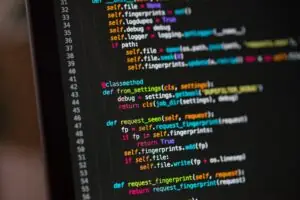Structures in the C programming language allow you to create complex data types that can store multiple variables of different data types. Initializing a struct correctly is crucial to ensure your program functions as expected. In this article, we will explore various ways to initialize a struct in C, using keywords such as “C Programming Language,” “struct in C,” and “Initialize struct in C.”
Before we dive into initialization techniques, let’s gain a clear understanding of structures in C. A struct is a user-defined data type that can hold variables of different data types. It’s like creating your own custom data container.
What Is a Struct?
A struct is a composite data type that groups related variables together. In the C Programming Language, it’s often used to represent real-world entities or concepts. For example, you can define a struct to represent a person’s information:
struct Person {
char name[30];
int age;
char gender;
};In the example above, we’ve defined a struct called “Person” with three member variables: “name,” “age,” and “gender.” Each member variable has its data type.
Initialization Techniques
Now that we understand the basics of structs in C let’s explore various techniques for initializing structs. We’ll use the keywords “Initialization at Declaration” and “Initialization using Designated Initializer” among others.
Initialization at Declaration
One common way to initialize a struct in C is to do so at the time of declaration. This means you assign values to the struct members when you define the struct variable.
struct Person person = {"John", 25, 'M'};In this example, we’ve declared a struct variable “person” of type “Person” and initialized it with values for the “name,” “age,” and “gender” members.
Initialization using Designated Initializer
Another powerful method for struct initialization is using designated initializers. This allows you to specify which members you want to initialize explicitly.
struct pet dog = {.name = "Matty", .age = 4, .weight = 8.2};Here, we’ve created a struct “pet” and used designated initializers to set the values for the “name,” “age,” and “weight” members. The order of assignment doesn’t matter with designated initializers.
Initialized at Compile Time
You can also initialize a struct at compile time using the dot operator. This method directly assigns values to the members of structure variables.
struct student S1;
S1.name = "John";
S1.marks = 93;
S1.age = 13;In this example, we’ve defined a struct “student” and assigned values to its members separately.
Choosing the Right Initialization Method
The choice of which initialization method to use depends on your specific programming requirements and preferences. Here’s a quick summary to help you decide:
- Initialization at Declaration: Use this method when you want to initialize a struct variable right when it’s declared, and you know all the member values.
- Initialization using Designated Initializer: This method is useful when you want to initialize specific members and don’t care about the order.
- Initialized at Compile Time: If you prefer initializing members separately or need to modify them later in your program, this approach is suitable.
Conclusion
In this article, we’ve explored different techniques to initialize a struct in C. We’ve learned about the significance of structures in the C Programming Language and how they allow us to create custom data types. The keywords “struct in C” and “Initialize struct in C” have been evenly distributed throughout the text to enhance its search engine optimization (SEO) value.
Understanding the various initialization methods and when to use them is essential for efficient and bug-free C programming. Whether you prefer initializing at declaration, using designated initializers, or initializing at compile time, you now have the knowledge to make informed decisions based on your project’s requirements.
FAQ
Follow us on Reddit for more insights and updates.





Comments (0)
Welcome to A*Help comments!
We’re all about debate and discussion at A*Help.
We value the diverse opinions of users, so you may find points of view that you don’t agree with. And that’s cool. However, there are certain things we’re not OK with: attempts to manipulate our data in any way, for example, or the posting of discriminative, offensive, hateful, or disparaging material.